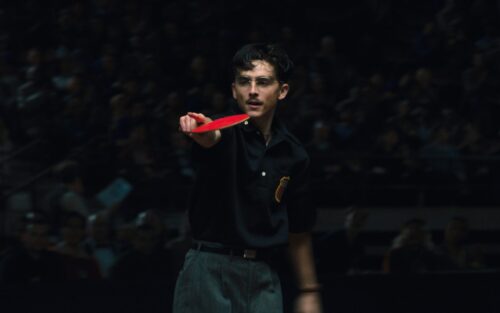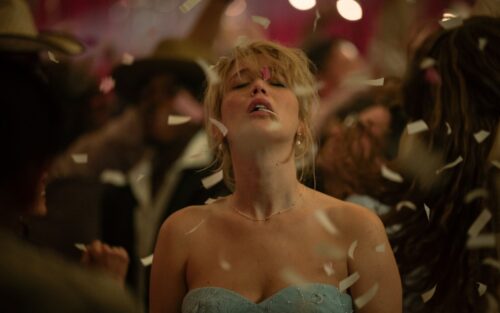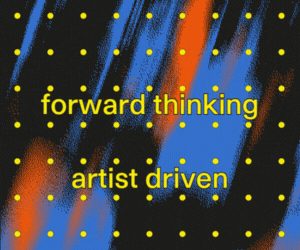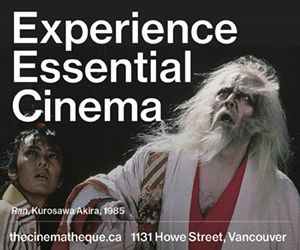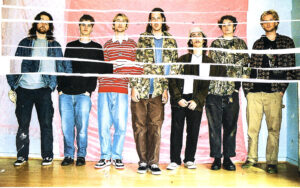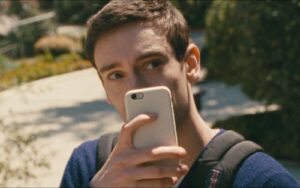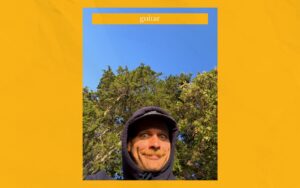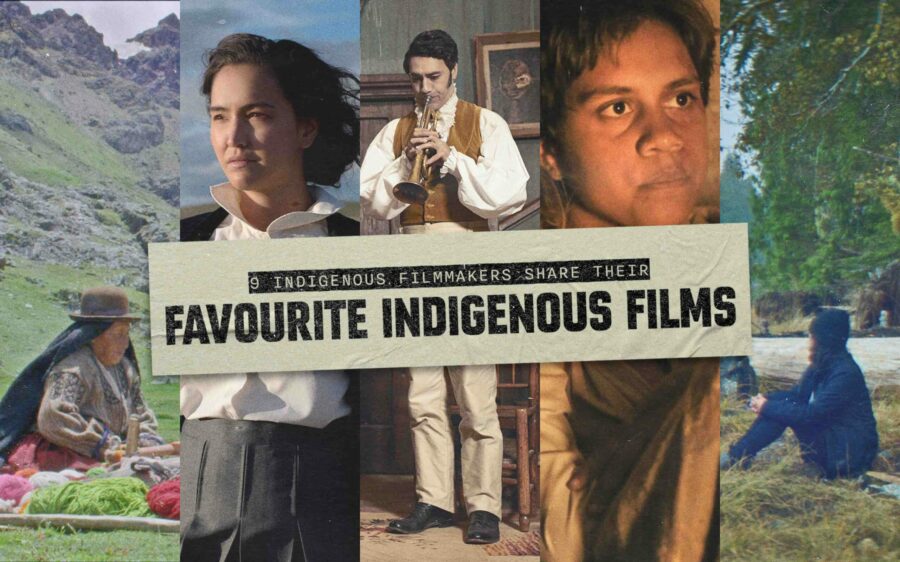
9 Indigenous Filmmakers Share Their Favourite Indigenous Films
From comedies to horror films, these influential directors share the films that altered their lives as artists.
by Maggie McPhee
- Published on
The late Maori filmmaker Barry Barclay introduced the term Fourth Cinema in the early aughts, right around the time Indigenous filmmakers in North America started setting out to make their own movies en masse. Where First Cinema denotes the classics, Second Cinema signifies art films, and Third Cinema the political works from the Global South, Fourth Cinema named the next evolution in the medium: Indigenous Cinema. This new wave would prize not only non-colonial stories, but non-colonial production and distribution methods.
Two decades later and the world is witnessing the bloom of Fourth Cinema from every corner. In honour of this watershed moment and National Indigenous History Month, nine contemporary Indigenous visual storytellers have shared their favourite Indigenous films and how they influenced their practice. Loretta Todd selected a film by Barry Barclay, and Janine Windolph picked a film by Loretta Todd. Lucy Tulugarjuk chose Atanarjuat: The Fast Runner by Zacharius Kunuk, a landmark film in which she starred, made entirely in the Inuktitut language by Isuma, the first ever Inuit-owned media company, that produced her debut feature this year. These filmmakers and the films that inspired them demonstrate that the power of Indigenous cinema goes beyond the screen, towards strengthening community, revitalising languages, and decolonizing communication infrastructures.
Caroline Monnet (Bootlegger, 2021)

Wiñaypacha (Eternity) by Oscar Catacora (2017)
As a filmmaker, sometimes I get to travel to the most unexpected places. I was lucky to attend the FicWallmapu Festival in Temuco Chile in 2019. This is where I discovered the feature debut Wiñaypacha (Eternity) by Oscar Catacora, the first Peruvian feature film shot entirely in Aymara. The film was presented by Peru as a national candidate for the Oscars in Hollywood as Best International Feature Film.
Incorporating and expressing the intricacies of Aymara language, culture and cosmology, Wiñaypacha depicts the story of an elderly couple named Willka and Phaxsi (Sun and Moon). Amidst the backdrop of the captivating and rugged Andes mountains, they wait for their son who has left for the city. It is a delicate and raw story with a sensitive and contemplative approach. The depth of empathy evoked by this film is magical and heartbreaking.
The filmmaker wants to convey messages that are important to him and to the Aymara people: the value of family, respect for the elderly, and the Peruvian government’s neglect of Indigenous people despite the fact that they make up a quarter of the nation’s population. This is a filmmaker that is not afraid to let silences speak, to embrace landscapes as a supporting character, to work with non actors and forces of nature in order to attain a level of authenticity that becomes universal. Wiñaypacha, which means “eternity” in the Aymara language, is a metaphor for the passage of time. This is a film that continued to live with me long after I had seen it and that will continue to resonate as the years pass.
Want to watch? You can find with Wiñaypacha (Eternity) at Cinelogue (subscription required)
Janine Windolph (Our Maternal Home, 2023)

Monkey Beach by Loretta Todd (2020)
My name is Janine Windolph, an Atikamekw and Woodland Cree filmmaker from La Ronge, Saskatchewan, and a member of Waswanipi Cree Nation, Quebec. I’ve been a filmmaker for nearly 20 years and in that time I’ve met many amazing Indigenous directors. One of them was Loretta Todd. I admired her ability to empower the voices of Indigenous people, and Loretta was important in my own development as a storyteller moving into film. She was a matriarch who paved the way for the future generation of Indigenous filmmakers.
In 2020, Loretta released Monkey Beach, a feature film adapted from Eden Robinson’s novel. The film was widely distributed and gave validation to Indigenous stories, and for my family it was a chance to see an Indigenous narrative from the West Coast that shared relatable life experiences, such as the residential school legacy and how it impacted intergenerational survivors, fracturing their connections to Indigenous ways of knowing. This was brought to life by Grace Dove, who plays the main character, Lisa-Marie, gifted with supernatural powers and living between two worlds.
I was impacted by Lisa’s journey to accept one’s gift of sight, and to live alongside our ancestors and the spirit world in a good way. I grew up in La Ronge and could relate to the tensions of maintaining on-the-land survival teachings and nurturing one’s cultural traditions while living in an urban setting. I resonated with reconnecting to family and friends you haven’t seen in a long time, feeling like they are remembering a different person. While it’s hard to face the cycles of abuse that still linger, it was Lisa’s ability to embrace her gifts that allowed her to see beauty and power in the land, the people and the community. This was the essential message from the film that I carried with me. Loretta did a wonderful job, from capturing the beautiful images of the land to strong casting and assembling a talented crew who ultimately brought this powerful story bundle to life.
Want to watch? You can find Monkey Beach free with an account on CBC Gem
Janine Windolph continues the trajectory of her storytelling at the National Film Board of Canada with her new, nurturing exploration of matriarchal kinship, Our Maternal Home (2023), a powerful affirmation of her family’s identity that follows her previous NFB films, Life Givers: Honouring Our Elders and Children (2007) and Stories Are in Our Bones (2019). These films are now available for free streaming across Canada on nfb.ca.
Jules Arita Koostachin (Broken Angel, 2022)

Samson and Delila by Warwick Thornton (2009)
I have watched this film so many times over the years, and every single time I walk away with a new understanding and perspective on Indigenous love and trauma. This film carries agency, it has the power to change perspective. I have used this film in my classrooms, more so when I used to teach Indigenous cinema. Samson and Delilah speaks to the importance of Indigenous representation on the screen, and to how unified we are as Indigenous people across the globe. Indeed, we are so very diverse in our lived experiences but this story of resiliency reminds us that there is a collective experience of survival.
Samson and Delilah features minimal dialogue, yet the film invites viewers to engage with the incredibly powerful lives of the main characters. Their relationship is troubled, but they still manage to support and care for each other through the trials and tribulations of colonisation. Warwick also creates space for viewers to engage with the vast and compelling landscape, demonstrating that the land is also a main character in the story.
Darrell Dennis (The Great Salish Heist, 2024)

What We Do In the Shadows by Taika Waititi and Jemaine Clement (2014)
I did not see What We Do in the Shadows until way after it was already a cult hit. What finally brought me to watch the movie was the growing success of Taika Waititi. I was excited to see a comedy that was co-directed by a Maori filmmaker. Until then, it seemed as if films made by Indigenous filmmakers only focused on trauma, colonisation, and Indigenous hardship. What We Do in the Shadows was a breath of fresh air because it was a straight-ahead comedy spoofing the vampire genre. Even though Taika is of Maori descent, there was no mention of his heritage or focus on the tragic history of Maori peoples in his film.
Since then, Taika has had a very successful career writing and directing mainstream movies, and although proud of his Maori heritage, he has not let it define him or his movies. What We Do in the Shadows and the rest of Taika’s work has been a blueprint for the movies and TV shows I want to make. Mainstream shows with Indigenous peoples in the leads, telling funny, entertaining and uplifting stories that Indigenous peoples rarely get a chance to tell.
Want to watch? You can find What We Do In the Shadows on AppleTV and APTN Lumi (subscriptions required)
Lucy Tulugarjuk (Tautaktavuk (What We See), 2023)

Atanarjuat: The Fast Runner by Zacharias Kunuk (2001)
Atanarjuat, The Fast Runner directed by Zacharias Kunuk influenced me to be an artist. It helped me to recollect some traditional languages of Inukttut and of our culture. If it was not for Atanarjuat, The Fast Runner I don’t know where I would be today. I’ve seen many places and met many people who cherish the movie as much as I do.
Want to watch? You can find Atanarjuat: The Fast Runner — which stars Lucy Tulugarjuk — free with an account on CBC Gem
Alexander Lasheras (The Beehive, 2023)

Wakening by Danis Goulet (2013) & Jordan River Anderson, The Messenger by Alanis Obomsawin (2019)
Danis Goulet’s short film Wakening throws us into a post-apocalyptic world, showing a bleak urban wasteland under military rule. The story follows a Cree wanderer who stumbles into an old, abandoned theatre, with trapped souls and a cannibalistic Weetigo creature from Indigenous legend. The narrative brilliantly transitions from the bright, muted grey skies of a ruined city to the dark, cavernous theatre, keeping the tension and dread alive.
Goulet’s direction keeps us on edge, and what really inspires me is the genre blending, going from a post-apocalyptic sci-fi setting that seamlessly transitions into Indigenous mythology. The mix of all these elements is spot on.
Legendary filmmaker Alanis Obomsawin’s 2019 documentary Jordan River Anderson, The Messenger tells the heart-wrenching story of Jordan River Anderson, a child born with a rare muscular disorder who tragically died in hospital care because the federal and provincial governments couldn’t agree on who would pay for his home care. The film chronicles the creation of a policy known as the ‘Jordan’s Principle’, ensuring Indigenous children receive the same care as non-Indigenous children. What I love about this film is how Obomsawin does an incredible job of presenting the reality of the situation, allowing viewers to conclude the injustices faced by Indigenous people without resorting to sentimentalism.
Leading us through the film is the tireless advocate Cindy Blackstock, whose constant fight for justice is remarkable in the face of a bureaucratic colonial system. The director is as patient as the story’s protagonist in seeing justice play out, and it does. It’s a moving story that fills you with hope for the future of Indigenous peoples and Canadian society at large.
Want to watch? You can find Wakening free on YouTube and Jordan River Anderson, The Messenger free at The National Film Board
Jessie Anthony (Brother, I Cry, 2020)
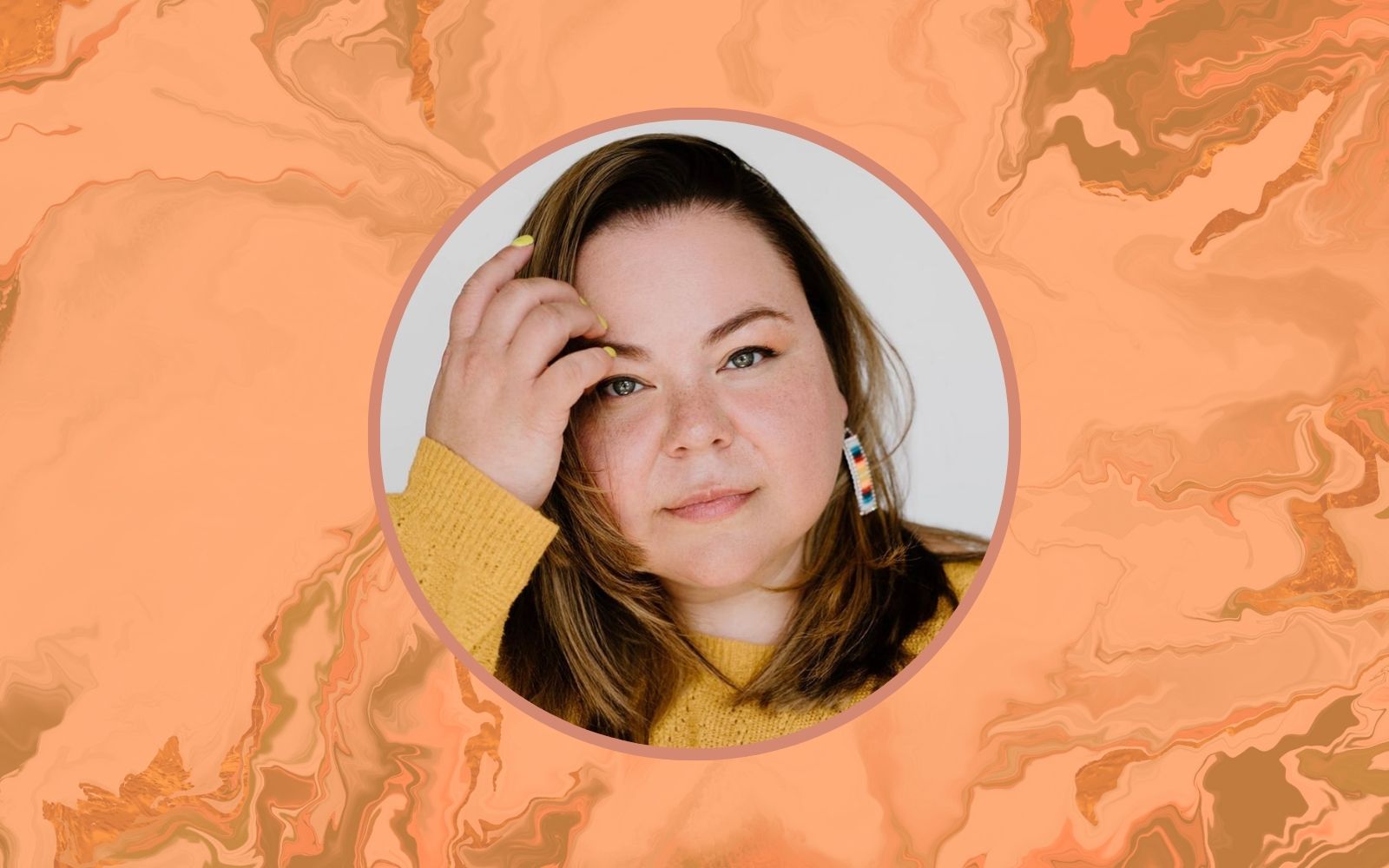
Edge of the Knife (SGAAWAAYK’UUNA) by Helen Haig-Brown and Gwaii Edenshaw (2018)
A profound influence on my artistic journey has included the film Edge of the Knife (SGaawaay K’uuna), masterfully directed by Helen Haig-Brown and Gwaii Edenshaw. This cinematic gem is a cornerstone of Indigenous filmmaking, distinguished by its entire cast speaking the Haida language and breathtaking portrayal of the community and landscape.
Set in a pre-contact era, the narrative explores themes of grief, compassion, and forgiveness, resonating with a haunting nostalgia even for an Onondaga person from the woodlands like myself. Witnessing this project unfold firsthand as the First Assistant Director and guest profoundly shaped my understanding and commitment to telling Haudenosaunee stories. This project has also made me a more mindful and empathetic director. Edge of the Knife enriched my perspective and inspired me to embrace my creative thoughts and people skills and celebrate the culture within my work simply because I am Onondaga.
Watching the film on the big screen for the first time was magical; the colour, the language and the landscape had me in tears and laughter. The experience I got from making this movie and watching this movie changed my life.
Want to watch? You can find Edge of the Knife (SGaawaay K’uuna) on AppleTV (subscription required)
Corey Payette (Les Filles du Roi, 2023)

Bones of Crows by Marie Clements (2022)
I have a long history with Marie Clements: she is an extraordinary artist, someone I’ve looked up to and respected for many years. She is next-level inspiring and it’s not just the stories she tells but the way she tells them that I feel are so rooted in a real, foundational truth, connecting with so many generations. Because there is such a broad spectrum of Indigenous perspectives all across Turtle Island, she’s able to take so much of those perspectives and filter them through her genius mind and tell a beautifully complex story that spans an entire lifetime; such is the case with Bones of Crows.
There were things that I didn’t even know and learned through this film (like Cree language being used as a code language during the war) and it’s just such a satisfying experience to go to an Indigenous film and be surprised! You’re proud of the story but also your understanding of history changes, it becomes a really special thing. And I believe Marie to be the perfect person to tell such complex stories.
Marie also works with such phenomenal performers, the who’s who of Indigenous actors are in her films (many of whom are friends and colleagues, people that I’ve worked with for many years.) I am so excited that they are getting their due, performing at such a big scale and under this kind of spotlight. Some of the cast and crew I met while being part of Marie’s The Road Forward (2017). I was a performer back then, and she still works with a lot of that same crew, so it’s a real joy to get to see Marie operate at this kind of level artistically. It is exciting and inspiring, more so knowing that others, many more people, get to experience the prowess of her work.
Want to watch? You can find Bones of Crows on AppleTV, Prime Video, and YouTube and the expanded five-part mini series free with an account on CBC Gem
Corey Payette is guest-curating four films for National Indigenous Peoples Day at VIFF Centre on June 21. Additional screenings of his own film, Les Filles du Roi, take place on June 22 and 23. VIFF provides a number of complimentary tickets to self-identifying Indigenous Peoples year-round at VIFF Centre and at their annual fall festival. Learn more.
Loretta Todd (Monkey Beach, 2020)

Te Rua by Barry Barclay (1991)
Before I share more, I want to honour Barry Barclay, Wi Kuki Kaa and Barb Cranmer, who have all gone on their spiritual journey. Respect. All deeply missed.
I heard of Barry Barclay, a Maori filmmaker, raconteur and writer. And he was on his way to Vancouver to screen Te Rua at VIFF, with Wi Kuki Kaa, an actor and fellow raconteur. I got VIFF to put on a special night for these tricksters. I was up all night making hundreds of bite-sized fry bread. Same for ‘Namgis filmmaker Barb Cranmer, who made bite-sized salmon pieces, to go with the fry bread. We were young. New filmmakers. Fresh from film schools. Excited to see these real live Indigenous filmmakers who were making feature films!
Te Rua is about Māori activists who go to Berlin to take back ancestral carvings held captive in a museum, but their plan fails. Wi Kuki Kaa plays Rewi, a corporate lawyer with a troubled mind living the good life in Berlin. He wants nothing to do with these revolutionary antics. Returning home to Aotearoa, Rewi is reminded by Nanny Matai that the carvings are beings, not artefacts. He must be a guardian. Back in Germany, Rewi plots to ransom German statues, leading the police to mistakenly believe they are holding real Germans hostage, causing chaos and violence.
So why, as a filmmaker, as an Indigenous woman, was this film important and influential to me? Well, on that night those tricksters enthralled us with their stories. We were building community. This wasn’t for red carpet prestige; we were creating sovereign space, honouring reciprocity.
Te Rua includes moments that reveal a filmmaker who, while using western film tropes and plot points, deeply understands sovereignty and decolonizing the screen. The film opens by breaking the fourth wall, with an orator addressing a silent director, marked only by a camera on a cliff in the rain. The orator asks, “Are you rolling?” The response is men performing the Haka, grounding us in the story of a theft and a death. The rain cleanses everyone, every stone, every moment. And elder Nanny Matai walks the shore, holding secrets, holding sorrows.
There are no doubt moments in the film forced to carry plot points. But Barry, the trickster, knows this and knows some of us know this. And then he hits us in our cultural guts with the singing of Meerata, one of the activists as they greet these carvings, these beings in the museum. Her voice shakes with emotion, sadness, anger and even with love for these beings. It is real. It isn’t just a scene in a film. It is a moment for all of us who long to return those beings, those spirits, those memories, those stories to their homes, their families.
And then there is this simple moment, when Rewi is at home in Aotearoa, with his kids and grandkids, asleep on the couch after a welcoming party. His family sings a teasing song about the great man who has returned home in his fancy socks. This is home. This is life. His troubled mind is calmed. How many of us have wanted our dads to be home, even in smelly socks. Or how many of us remember those relatives sleeping on the couch, imagining them without troubles, only tranquillity, in their dreams.
Maori filmmakers have so much confidence with their voices, their visions. Other films that haunt me are Two Cars, One Night (2003) and Tama Tū (2005), both by Taika Waititi. Everyone I know related to that night in Waititi’s short film Two Cars, One Night, filmed inky black and soft white, as children waited outside the bar for their families inside. Was that Taika Waititi’s lived experience? If not, for all his bravado, there is a deep empath within his films that can picture the stories he is told, feel the energy, sixth sense the ghosts of emotions.
As for Tama Tū, well, having made Forgotten Warriors (1997), I’ve spent many times with Indigenous veterans, was their friend, shared many meals and heard many stories. Those men in the battlefield in Tama Tū are the brothers to those men and women I knew. And their stories were vivid in my mind. The veterans and I planned battlefield scenes together. Oh, if only.
This leads me to Merata Mita and her son Hepi Mita. I saw Patu! (1983) and Bastion Point: Day 507 (1980) in Los Angeles, years after they were made. That is when I met Merata and her son, then a boy. She lived sovereignty. She embodied freedom. She was fierce. Imagine being that fierce. I was heartened by her films. She stood her ground. She was not colonised, not just decolonized. She was not colonised. Her films were what Barry Barclay called Fourth Cinema. There was no adherence to documentary templates. No need to explain or denounce or even narrate. Just the sharp edges of reality. Just the heart of a people never, ever giving ground.
Her son, Heperi Mita, made Merata: How Mum Decolonized the Screen. How does one tell a story of someone epic and legendary and yet so human all at the same time? Heperi made this film the only way possible, with love. In fact that is what is woven within and between all these films: love. Deep, endless love for whanau, endless love for whenua. Family and land. It is in the lingering shots on beautiful faces. Expansive shots of land and ocean. Sharing food. Honouring protocols. Singing stories. Knowing the histories that fall like rain on the rocky shores, hidden in the mists but never forgotten.
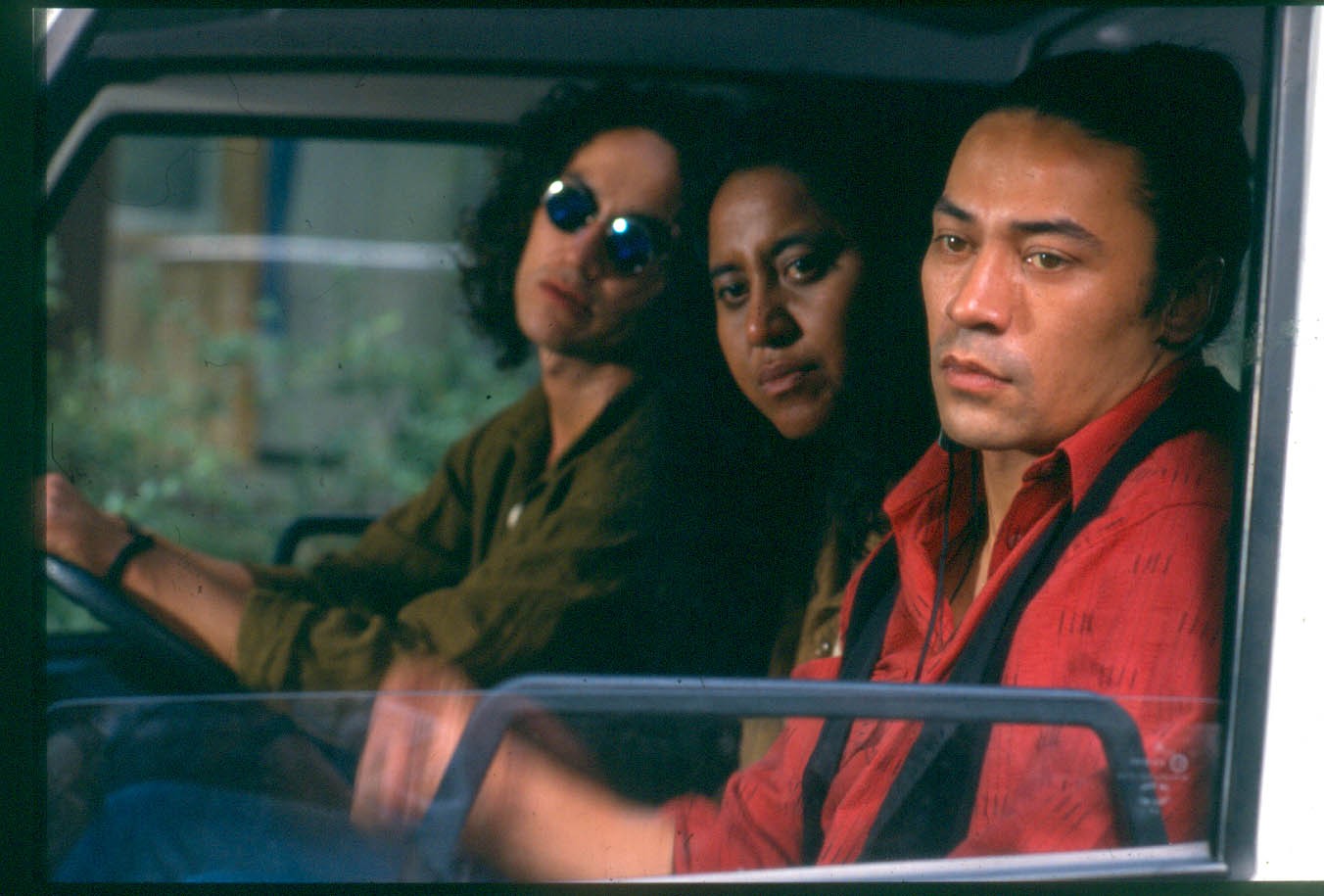
Want to watch? You can find Te Rua at Cinema Politica (subscription required), Loretta Todd’s Forgotten Warriors free at The National Film Board and Merata Mita’s Patu! free at NZ On Screen
By Prabhjot Bains
Glen Powell fights his way through a blunt but lovingly pulpy satire.
By Prabhjot Bains
Jennifer Lawrence goes ballistic and animalistic in Lynne Ramsay’s fever-dream character study.

